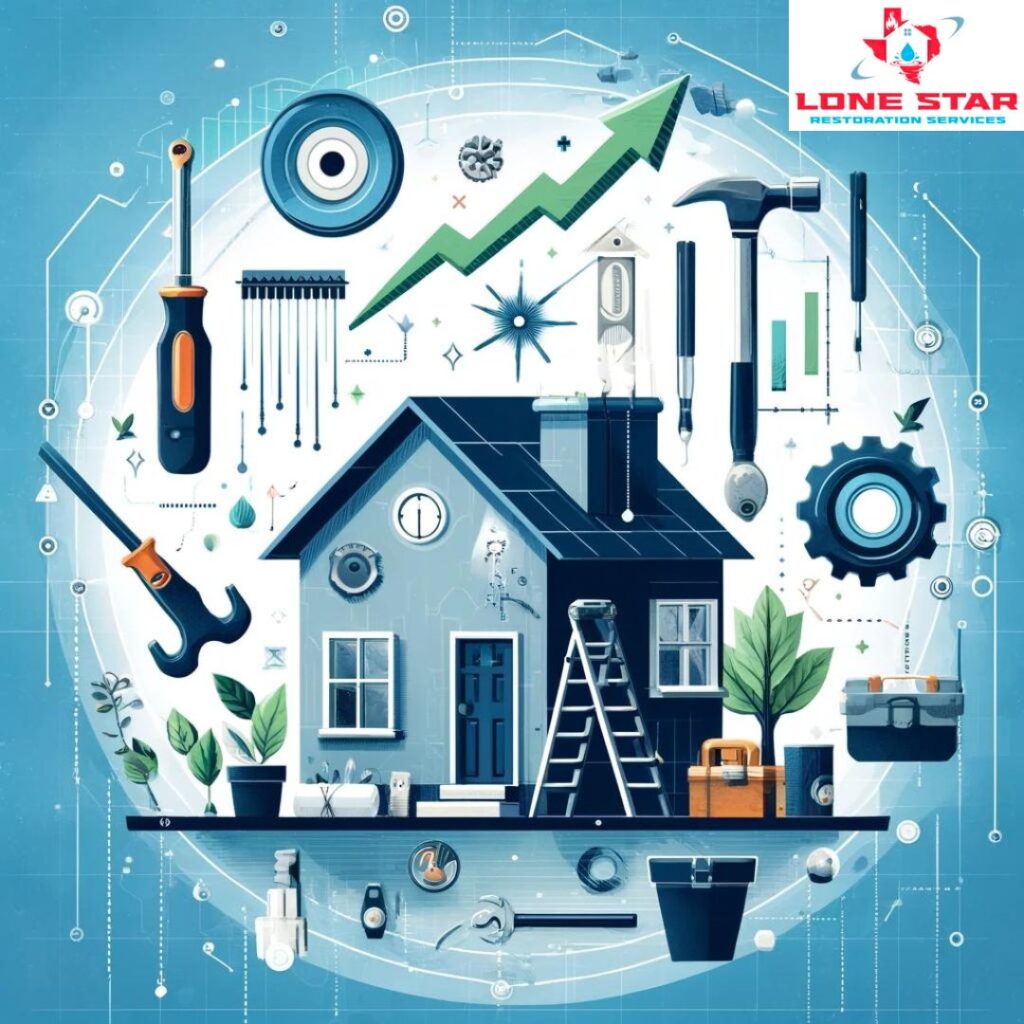The Significance of Professional Restoration Services in Preserving Your Property’s Value
In the aftermath of property damage, whether due to water, fire, or another unforeseen disaster, homeowners are faced with a critical decision: to attempt repairs themselves or to enlist the help of professional restoration services. This choice can significantly impact not just the immediate recovery of the property but its long-term value as well. The importance of professional restoration services goes beyond mere repair work; it’s about safeguarding one of your most significant investments—your property.
Understanding the intrinsic value of your property, and the factors that contribute to it, is essential in appreciating why professional restoration is not just beneficial but necessary. Damage to a property, if not correctly restored, can lead to a decrease in its market value, affect its aesthetic appeal, and compromise structural integrity, making the decision for professional intervention a crucial one.
This blog post aims to explore the dynamic role professional restoration services play in maintaining, and sometimes even enhancing, the value of your property. Through a detailed examination of the immediate impacts of property damage, a comparison between professional and DIY restoration efforts, and an insight into the long-term benefits of choosing professional services, we will underscore the importance of expert restoration in protecting your investment.
Understanding Property Value
To grasp why professional restoration services are so crucial in the wake of property damage, it’s important to first understand what constitutes the value of a property. Property value isn’t just about the current market price; it encompasses a range of factors including the property’s location, size, condition, and the functionality of its space. Equally, aesthetic appeal and structural integrity play significant roles in determining how a property is valued in the real estate market.
When disaster strikes, be it through water damage, fire, or mold, these key components of property value are immediately at risk. Water damage can compromise the structural integrity of a building, fire damage can destroy both the functionality and the aesthetic appeal of spaces, and mold can present serious health risks while also detracting from the property’s visual and structural quality. Each of these issues, if not promptly and effectively addressed, can lead to a significant decrease in property value. This depreciation is not just a reflection of the cost to repair the damage but also factors in the diminished desirability of the property to potential buyers or renters.
Moreover, the presence of unresolved or improperly repaired damage can be a red flag for property inspectors, leading to unfavorable reports that can deter prospective buyers or lower the property’s valuation. This is why the manner in which restoration is approached following property damage is pivotal. The choice between a DIY fix and professional restoration services can make all the difference in preserving the value of a property, ensuring that it remains a viable, desirable asset in the real estate market.
The Immediate Impact of Property Damage
When property damage occurs, its immediate effects can range from cosmetic issues to deep structural problems. These initial impacts are often more complex than they appear, potentially leading to long-term consequences if not addressed with expertise and precision. The key to mitigating these effects lies in understanding the full scope of damage and implementing a swift, effective response.
Structural Integrity: One of the most critical concerns following property damage, especially with water or fire, is the impact on a property’s structural integrity. Water can weaken foundations, promote wood rot, and corrode metal structures, while fire can compromise the strength of framing and other structural elements. Without prompt and professional assessment, what might seem like superficial damage could actually pose serious risks to the building’s stability and safety.
Aesthetics and Functionality: Beyond the structure itself, the aesthetics and functionality of a property are also at immediate risk. Water damage can leave unsightly stains, promote mold growth, and ruin finishes, while fire damage can lead to soot accumulation, burnt surfaces, and pervasive odors. These issues not only affect the immediate usability of the space but can also deter future interest from potential buyers or renters, impacting the property’s marketability.
Safety Concerns: Beyond the physical damage, there are immediate safety concerns to consider. Electrical systems can become hazards, especially after water damage. Chemicals and toxins can be released into the air from burned materials or mold growth, creating health risks for occupants.
The immediate aftermath of property damage is a critical period that requires more than just a quick fix. It demands a comprehensive approach that assesses and addresses all levels of damage to prevent further deterioration. This stage sets the foundation for the restoration process, highlighting the need for professional expertise to ensure that the property is not only repaired but restored in a way that maintains its value and safety for the future. Without this professional intervention, homeowners risk overlooking hidden damages that could lead to more significant problems and costs down the line, eroding the property’s value and their investment.
Professional vs. DIY Restoration Efforts: Delving Deeper
The choice between embarking on a DIY project for property restoration or enlisting the help of professionals is one many homeowners face, especially in the immediate aftermath of property damage. On the surface, DIY restoration might appear as a way to save on costs, offering a seemingly straightforward solution to a complex problem. However, the reality of restoration work is often far more complicated, requiring not just specific skills but also specialized equipment and a depth of knowledge that goes beyond the scope of most DIY endeavors.
The Appeal of DIY:
DIY restoration projects are often fueled by the desire for immediate action and the perceived savings on labor costs. With numerous online tutorials and resources, homeowners might feel equipped to tackle the challenge. However, restoration after events like floods, fires, or mold outbreaks involves complexities that generic guides can’t fully address. Each situation is unique, with its own set of challenges and required solutions.
The Shortcomings of DIY Efforts:
One of the primary drawbacks of DIY restoration is the potential for overlooking underlying damage. Water damage, for example, can seep into hidden areas, causing rot, mold, and structural issues that aren’t immediately visible. Similarly, smoke from fires can infiltrate seemingly unaffected areas, embedding harmful particles that pose long-term health risks. Without the right tools and knowledge, these problems can go undetected and untreated, leading to more significant issues down the line.
Furthermore, the use of incorrect materials or methods can exacerbate the problem. In an attempt to save costs, DIYers might use materials that are not suited for the specific type of restoration needed, or they might apply techniques that do more harm than good. This not only risks further damage to the property but can also void warranties or insurance policies, leading to higher costs in the future.
The Value of Professional Restoration Services:
Professional restoration services offer a level of expertise and resources that DIY efforts cannot match. Specialized knowledge of construction materials, building codes, and the latest restoration techniques ensures that the job is done right the first time. Professionals come equipped with advanced technology for detecting hidden damage, such as thermal imaging cameras and moisture meters, ensuring that no aspect of the damage is overlooked.
Moreover, professional teams are trained to handle hazardous materials safely and are familiar with the proper procedures for disposal. They can also navigate the complexities of working with insurance companies, providing detailed documentation and assessments that facilitate the claims process.
The Comprehensive Approach:
Professional restorers take a holistic approach to restoration, considering both the immediate and long-term impacts of damage. Their goal is not just to repair the property but to restore it in a way that maintains or even improves its value. This includes using high-quality materials, ensuring that repairs blend seamlessly with the existing structure, and advising homeowners on preventative measures to avoid future incidents. While the initial appeal of DIY restoration is understandable, the risks and potential for additional costs make it a less favorable option in many cases. Professional restoration services offer peace of mind, comprehensive solutions, and the assurance that your property’s value is being protected. In the face of property damage, the decision to choose professional restoration is an investment in your property’s future, safeguarding against the depreciation that can result from unresolved or improperly addressed damage.
Role of Professional Restoration Services
Professional restoration services play a pivotal role in not only repairing damage but also in maintaining and often enhancing a property’s value. These services offer:
- Quick Response and Comprehensive Assessment: Professionals can swiftly assess the damage and implement a targeted restoration plan, minimizing immediate and secondary damage.
- Advanced Techniques and Equipment: State-of-the-art equipment and techniques are used to thoroughly clean, dry, and restore the property to its pre-damage condition.
- Expert Repairs and Remodeling: Professional teams have the skills to perform high-quality repairs and remodeling that align with building codes and standards, ensuring the property’s safety and appeal.
- Assistance with Insurance Claims: Many restoration services have experience dealing with insurance companies and can help homeowners navigate the claims process, ensuring they receive fair compensation for the damages.
Long-Term Benefits of Professional Restoration
Investing in professional restoration services offers long-term benefits that far outweigh the initial costs, including:
- Preventing Further Damage: Professionals can identify and mitigate risks that may not be immediately apparent, preventing future problems and expenses.
- Enhancing Property Appeal: Quality restoration work can improve the aesthetic appeal and functionality of the property, making it more attractive to potential buyers or renters.
- Assurance of Quality: Professional restoration gives homeowners peace of mind knowing that their property has been repaired to meet safety and quality standards, preserving its value.
- Documentation for Property Valuation: Professional services provide detailed records of the damage and repairs made, which can be valuable during property valuations or sales.
Conclusion
The importance of professional restoration services in maintaining your property’s value cannot be overstated. In the aftermath of damage, choosing professional restoration is a crucial investment in your property’s future. Not only does it ensure that your property is safely and effectively restored, but it also protects and potentially enhances its value in the long run.
If you’re facing property damage, don’t risk your home’s value with temporary fixes or incomplete DIY efforts. Contact Elite Restoration and Construction Inc today. Let our expert team provide you with the comprehensive, high-quality restoration services your property deserves. Secure your investment and peace of mind by choosing professional restoration.





